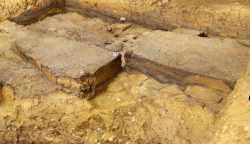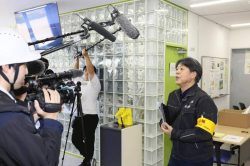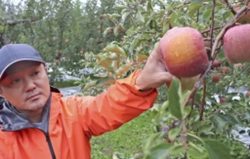Electric Oranges? Japan’s Researchers Test Device to Generate Power from Mikan Mandarin Fields

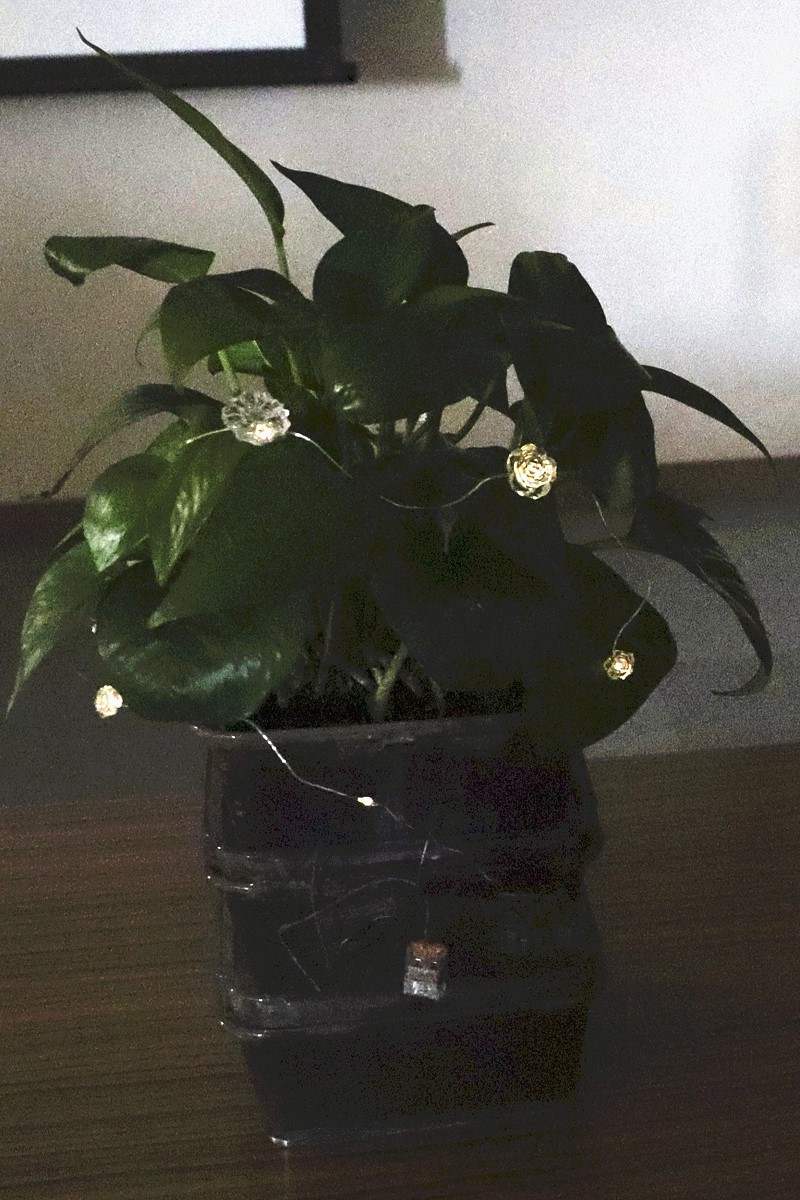
Left: Keisuke Matsumura, assistant professor at Tokyo University of Agriculture and Technology, explains the device.
Right: LED bulbs that can be flashed by electricity produced by a device developed by Tokyo University of Agriculture and Technology.
1:00 JST, October 18, 2024
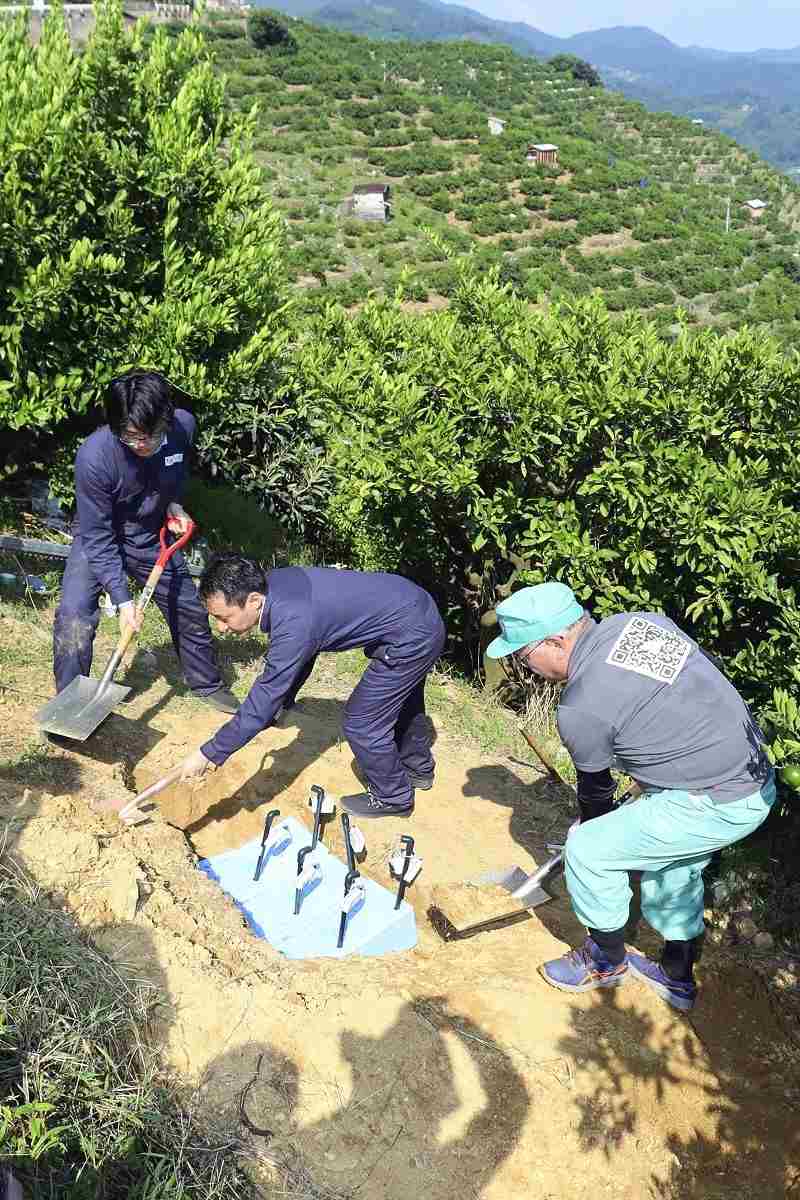
A team of researchers bury a microbial power generation device on a steeply-sloped mikan mandarin orange field in Yawatahama, Ehime Prefecture.
YAWATAHAMA, Ehime — Shikoku Electric Power Co. and researchers from the Tokyo University of Agriculture and Technology and other organizations have begun tests to prove the possibility of “microbial power generation” in mikan mandarin orange fields in Yawatahama and Ikata in Ehime Prefecture.
Making use of microorganisms that emit electrons and generate hydrogen ions when decomposing organic matter in the soil, the team’s “microbial fuel cell” stores these small electric charges for later use. In the current fiscal year, the team plans to examine whether power generation varies depending on climate and season. Starting from the next fiscal year, they plan to make use of the generated power for “smart agriculture,” in which they will remotely monitor data such as field temperatures.
The university began research on microbial power generation in 2019. According to Keisuke Matsumura, 28, a specially-appointed assistant professor, it has been known for about 100 years that microorganisms emit electrons, but because the amount of electricity generated is small, previous research into its practical applications made little progress. In recent years, however, technologies such as microbial fuel cells have been developed, and other universities and institutions are already conducting similar tests in rice paddies.
The Tokyo University of Agriculture and Technology has also developed an energy storage device, making it possible to output relatively large amounts of electricity for short periods of time. This allowed researchers to use the generated power to flash light-emitting diode (LED) bulbs and wirelessly transmit data.
Microorganisms that emit electrons exist in nature. Using them to generate electricity does not necessitate cultivating them to increase their numbers, and on-site soil can be used. A device can be buried in the soil to generate power using only the nutrients found there. In an effort to apply such environmentally friendly technology to agriculture, the university has decided to conduct its tests in cooperation with the electric power company and other bodies.
The technology is expected to help mikan farmers, many of whom are aging. If it can be used to power devices to remotely monitor the temperature and other data on their mikan mandarins, which are often grown on steep slopes, it could reduce the burden they face in patrolling their fields.
In an experiment conducted by the university, a single device containing about 350 cubic centimeters of soil was proven to be able to generate about 10 microwatts of electricity. In their ongoing test, the team will verify whether such a device can stably generate power in an outdoor field.
In early September, Matsumura and his team buried a device about 30 centimeters underground in a mikan field in Yawatahama and began measuring the voltage. The field, which is located at an altitude of about 200 meters, is managed by a company affiliated with Shikoku Electric Power.
“Although it doesn’t output that much power, we want to make use of the small amount of energy in the soil around us for agriculture,” Matsumura said. “We also want to determine how power generation changes depending on the quality of the soil and show others that microbial power generation is useful.”
“We would like to make use of this system to solve local problems. Thanks to its simple structure, it may be possible to provide it at a low cost,” said Hiroyuki Mishima, head of Shikoku Electric Power’s New Business Planning Department.
"Science & Nature" POPULAR ARTICLE
-

Genome Study Reveals Milestone in History of Cat Domestication
-

Big Leap in Quest to Get to Bottom of Climate Ice Mystery
-
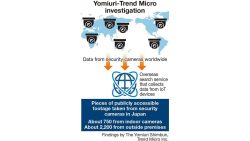
Security Camera Footage Vulnerable to Outside Access; Investigation Finds 3,000 Pieces Exposed Online
-

Japan Set to Participate in EU’s R&D Framework, Aims to Boost Cooperation in Tech, Energy
-

Paws on Parade: Nairobi’s Dogs Dazzle at ‘Pawchella’
JN ACCESS RANKING
-

Tokyo Economic Security Forum to Hold Inaugural Meeting Amid Tense Global Environment
-

Keidanren Chairman Yoshinobu Tsutsui Visits Kashiwazaki-Kariwa Nuclear Power Plant; Inspects New Emergency Safety System
-

Imports of Rare Earths from China Facing Delays, May Be Caused by Deterioration of Japan-China Relations
-

University of Tokyo Professor Discusses Japanese Economic Security in Interview Ahead of Forum
-

Japan Pulls out of Vietnam Nuclear Project, Complicating Hanoi’s Power Plans


